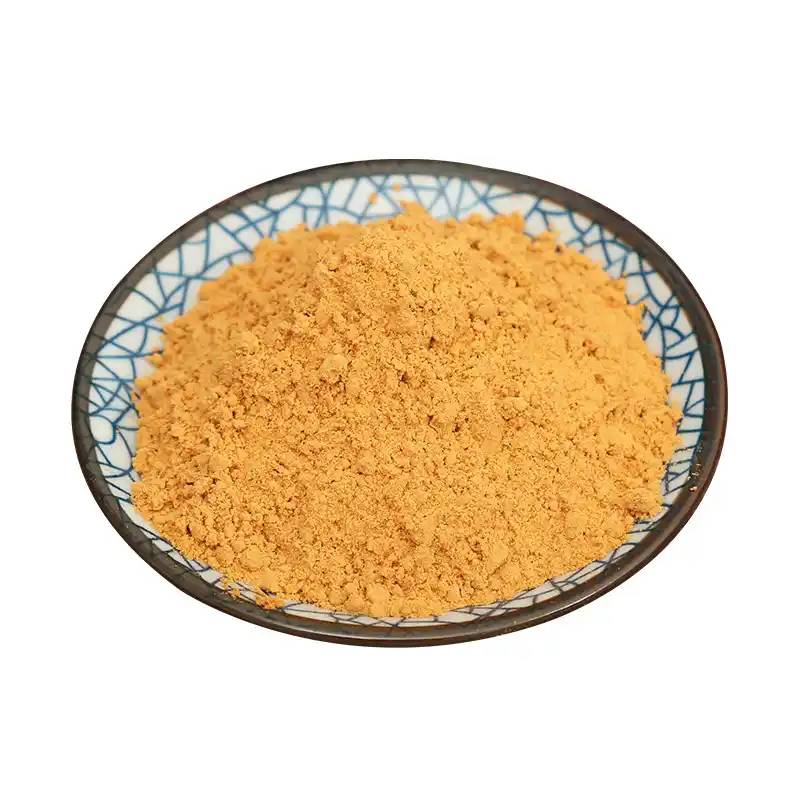[식물학] 식물원 자연색에 관한 연구에 대한 자료입니다
Colors can be divided into synthetic colors and 자연 색. Natural colors are colors that are extracted from natural organisms and then purified and refined artificially. Natural colors can be divided into plant pigments (also known as plant-derived natural colors), animal pigments, microbial pigments and mineral pigments according to their source[1]. Animal and microbial pigments are mainly derived from insects and microorganisms. The most famous animal pigment is carmine (a red natural dye). Carmine is a pigment obtained by drying female cochineal insects that parasitise cactus-like plants. Its chemical composition is carminic acid[2]. Most mineral pigments are harmful to the human body and therefore cannot be used for colouring in the food industry. Plant pigments are mainly derived from plant tissues such as flowers, fruits, leaves, stems and seeds. Natural colors are derived mainly from plant tissues, such as flowers, fruits, leaves, stems and seeds. Most of the so-called natural colors come from plant materials[3], and the plant species involved span many families and genera. According to incomplete statistics, there are currently more than 80 known natural colors[4], and more than 30 plants have been used in the development and research of natural colors[5]. Because plant-derived natural colors are safe and non-toxic, they are often used to improve the appearance and color of foods, medicines, cosmetics, etc.
Synthetic colorants are organic pigments obtained by artificial chemical synthesis. They are generally made from chemical products such as benzene, toluene and naphthalene as the main raw materials, and are formed through a series of reactions. Most synthetic colorants are organic synthetic pigments, and common ones include carmine, indigo and sunset yellow. Synthetic colorants have many advantages. Their colors are generally bright, they are stable, and they are not easily affected by environmental factors such as light, heat and oxygen. Synthetic pigments have strong coloring power and can be used as colorants or dyes, which are easy to dye food or textiles. In addition, the production process and process of synthetic pigments are easy to control, and their industrial production costs are low [6]. However, synthetic pigments themselves have no nutritional value, and most pigments are toxic to human health and even have the risk of causing teratogenic and carcinogenic effects. With the improvement of people'의 생활 수준, 그리고 특히 합성 안료로 인한 다양한 식품 안전 문제, people's 식품첨가물의 안전성에 대한 요구가 증가하고 있다.천연안료는 천연적이고 건강한 속성을 갖고있는바 독성이 없어 필연적으로 합성안료를 대체하게 될것이며 식품, 제약, 경공업 등 분야에 널리 리용되고있다.
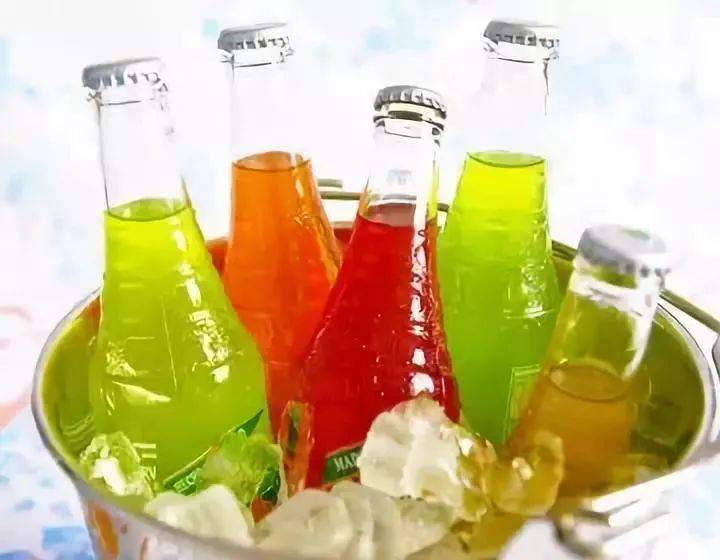
식물유래 천연색 사용의 역사 및 특성 1
1.1 식물 유래 천연색 사용의 역사
천연색은 인류가 최초로 사용한 안료이다.일찍 기원전 10세기에 고대영국사람들은 미치광이식물의 즙으로 장미색의 사탕을 만들었다.이는 고대 사람들이 천연색을 사용했다는 최초의 기록이다.고대 이집트에서 상인들은 사탕의 색을 개선하기 위해 천연 식물 추출물과 와인을 사용했습니다.중국에서도 천연색을 사용한 역사가 오래되어 직물 염색, 식용 색소, 루즈, 화장품의 제작 등에 널리 사용되고 있다.예를 들어 상나라 때부터 고대 중국 여성들 사이에서 유행했던 루즈는 홍화의 꽃잎에 있는 색소로 만들어졌다.예를 들어 염료를 조제하는 데 쓰이는 매화와 정원사는 이미 동주시대 (기원전 221년) [8]에 대규모로 재배되었다.today&에서#39;의 사회, 자연색의 종류와 사용범위가 부단히 확대되였으며 넓은 응용전망이 있다.
식물유래 천연색의 특성 1.2
Natural colors from plant sources are produced as a result of the natural growth and metabolism of plant tissues, and have some advantages over synthetic pigments, such as: ① most plant-derived natural colors are non-toxic and have no side effects; some plant-derived natural colors with high safety can be widely used as pharmaceutical or food additives; ② plant-derived natural colors reflect the colors of the plants themselves, so the shades are very natural. As food additives or colorants, they can make the shades closer to the colors of natural objects, making it more acceptable; ③Many edible plant-derived natural colors contain essential nutrients that the body cannot synthesize on its own. These plant-derived natural colors not only improve the color of food, but also supplement the body's의 필수 영양소이며 특정 질병에 대한 예방 및 치료 효과까지 있습니다.예를들어, β-carotene에서 비타민 A로 전환 될 수 있는 인간의 몸, 그리고 비타민 A는 안구 건조 증 질환을 치료의 효과 가고 야맹증를 예방 할 것 입니다.
식물에서 추출한 천연색은 많은 장점을 가지고 있지만, 여전히 몇 가지 단점이 있는데, 이처럼 천연색은 정화가 어렵다.식물에서 추출한 천연색은 식물에 존재하는 화합물로서 식물의 다른 복잡한 물질과 공존하는 경우가 많아 추출과정이 복잡하다.얻은 색소 추출물에는 흔히 기타 물질이 함유되여있어 순도가 비교적 낮다.더욱이 현재 식물유래 천연색의 생산 공정에서 미숙한 공정과 덜 진보된 장비 등 주요 문제로 인해 식물유래 천연색의 추출률이 낮고 가격이 비싸다.② 식물에서 유래된 천연색의 색조는 불안정하고 빛, 온도, 산소, pH 값, 금속 이온 등의 외부 환경 요인에 의해 변화하는 경우가 많아 [10] 안정성이 떨어진다.게다가 식물에서 추출한 천연색은 쉽게 산화돼 사용 수명을 단축시킨다.항산화제나 색소 안정제를 자주 보충해야 하는데,이 때문에 사용이 번거롭다.다시마는 식물유래 천연색의 종류가 많고, 그 성질도 복잡하다.특히, 그 자체의 물리적, 화학적 특성으로 인해 그 적용범위가 제한되고, 고도의 특수성을 갖게 된다.
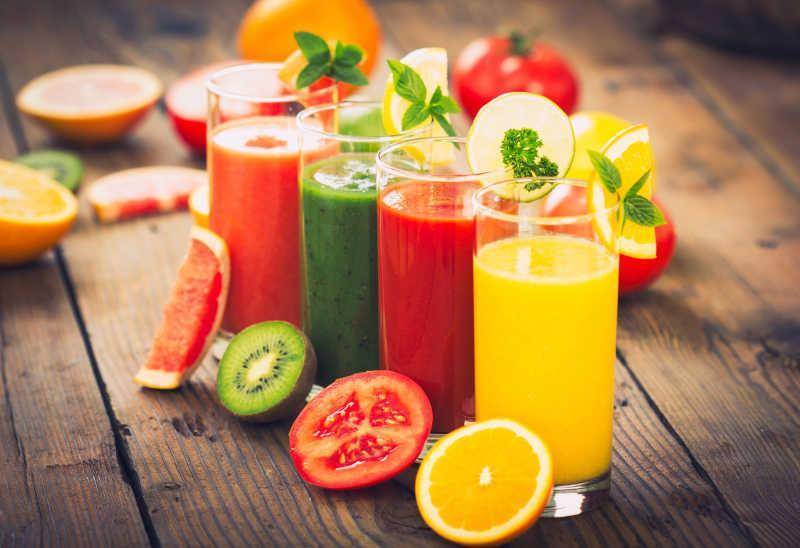
식물유래 천연색의 분류 2
식물유래 천연색은 그 원료에 따라 분류되는 것 외에도 용해도 특성에 따라 지용성 안료와 수용성 안료로 나눌 수 있다;그리고 화학 구조에 따라 포르피린, 피롤 유도체, 퀴논 및 크산톤, 폴리엔 안료, 폴리페놀 유도체 [9] 등 주요 색소 종류로 나눌 수 있다.기능성 성분에 따라 안토시아닌, 카로티노이드, 플라보노이드, 피롤 및 기타 주요 색소 [10]로 나눌 수 있다.
2. 1 안 토시아 닌
Anthocyanins, also known as anthocyanidins, are a type of water-soluble pigment that generally exist in the form of anthocyanins in the flowers, leaves, fruits, stems and other parts of plants. According to incomplete statistics, 27 families and 72 genera of plants contain different amounts of anthocyanins[11]. Anthocyanins display different colors under different pH conditions, appearing red under acidic conditions, purple under neutral conditions, and blue under alkaline conditions. The different colors of red, purple, and blue displayed by plants are also the result of the coloration of anthocyanins under different pH conditions in the cell vacuole. Anthocyanins have high biological activity and are hydroxyl donors that can be used as free radical scavengers. Studies have shown that anthocyanins have pharmacological effects such as anti-oxidation and anti-aging, anti-inflammatory and anti-cancer, immunity enhancement, cardiovascular protection and disease prevention [12]. Many plants in nature are rich in anthocyanins. For example, black goji berries have the highest anthocyanin content of any plant discovered so far. Purple sweet potatoes are an ideal raw material for anthocyanin extraction because of their high anthocyanin content and high yield.
2. 2 카로 티 노이 드
카로 티 노이 드, also known as polyene pigments, are a class of fat-soluble terpenoid polymers, mainly divided into carotenes and carotenoids. Carotenoids are widely found in plant parts that appear yellow, orange-red or red. The carotenoids in chloroplasts are mainly carotene (orange-yellow) and lutein (yellow), which play an important role in photosynthesis. Vitamin A (retinol) is an important substance for maintaining normal visual function and maintaining healthy skin. Some carotenoids can be converted into vitamin A. These are called provitamin A. The most common of these is beta-carotene, which is converted into vitamin A when the body needs it. Not all carotenoids can be converted into vitamin A. Lycopene (found mainly in tomatoes, watermelons and guavas), for example, cannot be converted into vitamin A. Some plant-derived carotenoids that have been tested for safety can be added directly to foods such as pastries, dairy products, cold drinks, and candy as colorants.
2. 3 플 라보 노이 드
플라보노이드는 일반적으로 플라본 (flavones)과 플라보놀 (flavonols), 디히드로플라보노이드 (dihydroflavonols), 디히드로플라보놀 (dihydroflavonols)로 나눌 수 있다.그들은 많은 식물 조직에서 널리 발견되는데, 대부분 옅은 노란색이거나 심지어 무색이며, 몇몇은 밝은 오렌지색입니다.그 중 식물계에 가장 널리 분포하는 것은 플라보노이드와 플라보놀이며,이 중 지금까지 400개 이상이 발견되었다 [13-14].플라보노이드는 중요한 생리기능을 갖고있으며 산화방지, 항돌연변이, 노화지연으로 인체건강을 보호하는데 중요한 역할을 한다.게다가, 안토시아닌과의 시너지 효과로 사용될 때, 플라보노이드는 안토시아닌의 산화를 줄이고 특정 색을 강화하는 효과를 가질 수 있습니다.플라보노이드의 가장 흔한 종류는 커큐민 (curcumin)으로, 주로 강황과 사프란 덩이줄기에서 발견되는 노란색 색소입니다.그것은 강력한 항산화, 항 염증, 항암, 착색 및 독소 억제 특성으로 인해 식품 및 약품에 널리 사용됩니다.
2. 4 Pyrrole
피롤색소에는 주로 엽록소와 그 구리 및 나트륨염, 아연과 나트륨염 등이 있다.녹색식물의 엽록체에서 많이 발견되는데 특히 고등식물의 잎과 열매의 녹색부분에서 단백질과 결합하여 엽록체를 형성한다.이런 색소는 인체의학에서 항바이러스, 항궤양, 항균, 간보호와 해독 등 많은 약리작용을 한다.
2.5기타 안료
기타 색소로는 주로 탄저균색소와 적색효모벼색소가 있다.탄저퀴논색소에는 주로 카르민과 락염료가 있는데 카르민은 식물과 붉은무우의 지하줄기와 뿌리에서 발견된다.항균, 해독 [15] 등의 의학적 효과가 있다.
식물유래 천연색의 추출 및 정제방법 3
식물유래 천연색을 추출하고 정화하는 방법에는 여러 가지가 있다.일반적인 추출 방법에는 전통적인 용매 추출, 초임계 유체 추출, 마이크로파 보조 추출, 가압 용매 추출 등이 있다.일반적인 정제 방법으로는 컬럼 크로마토그래피, 막 분리, 액체 크로마토그래피 등이 있다.다음은 식물 유래 천연색을 추출하고 정화하는 몇 가지 방법을 간략히 설명한다.
3.1전통적인 용매 추출
The traditional solvent extraction method is mainly used to extract both alcohol-soluble and water-soluble pigments. The method involves drying and crushing the raw materials, and then selecting a solvent to extract the pigments from the raw materials based on the solubility and polarity of the pigments and coexisting impurities. The crude pigment extract is then filtered, concentrated under reduced pressure, dried in a vacuum, and refined to obtain the finished product. The traditional solvent extraction method mainly includes the maceration method, the decoction method and the reflux extraction method. The traditional solvent extraction method has relatively simple equipment and process requirements, but the time taken for extraction and filtration is long, solvent consumption is high, the yield and purity of the product is low, and there is a risk of odors or solvent residues, which affects the quality of the product. Therefore, extracts obtained using the traditional solvent extraction method require further purification.
초임계 유체 추출 3.2
초임계 상태는 기체-액체 인터페이스가 특정 온도나 압력 이상으로 사라졌을 때의 상태를 말한다.이 상태의 유체를 초임계유체라고 한다.초임계 유체 추출 (Supercritical fluid extract, SFE)은 최근 개발된 새로운 분리 및 추출 기술로, 초임계 유체를 추출제로 사용하여 목표 물질을 추출한다.초임계 유체 추출의 원리는 다음과 같다:먼저 고압으로 초임계 유체에 용질이 용해된 다음, 계의 압력이 낮아지거나 계의 온도가 높아지면 밀도 및 용해도의 감소로 유체 내의 용질이 침전된다.초임계 유체에는 주로 이산화탄소, 암모니아, 에탄올, 일산화질소, 톨루엔, 벤젠, 물 등이 있다.
이산화탄소의 초임계 온도 (31 °C)는 상온에 가깝고 무독성과 무오염이며 장비를 부식시키지 않습니다.따라서 이산화탄소는 가장 일반적인 초임계 유체 [16]이다.식물유래 천연색 초임계 유체의 종류에 따른 최적 추출 공정 조건은 다양하겠지만, 일반적으로 추출 공정은 10 내지 50 MPa, 31 내지 80 °C, 3 내지 20 h [17] 범위에서 이루어진다.초임계 유체 추출은 전통적인 용매 추출 방법과 비교하여 추출 온도가 낮고, 추출 속도가 빠르며, 추출 시약 잔류물이 없고, 오염이 없으며, 기타 여러 가지 장점이 있다.그러나 초임계 유체 추출 기술은 높은 설비 투자 및 운영 비용과 불완전한 기술로 인해 실제 홍보 및 적용에 한계가 있다.
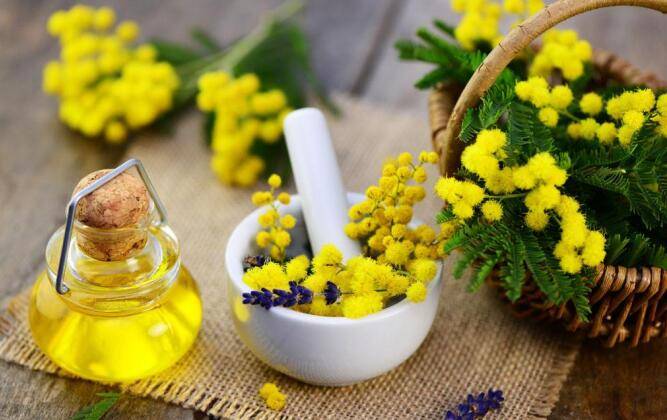
마이크로파 보조 추출 3.3
마이크로파 보조 추출 (Microwave-assisted extract, 줄여서 MAE)은 선택적으로 가열할 수 있는 마이크로파 가열 (microwave heating)과 용매 추출 기술을 결합한 분리 및 추출 기술이다.마이크로파 보조 추출의 원리는 다음과 같다:표적성분을 마이크로파 영역에서 선택적으로 가열하여 짧은 시간 내에 많은 양의 열을 발생시키고, 이로 인해 세포막 내 분자간의 수소결합이 끊어져 세포막 구조가 파괴된다.이는 세포내의 자연색이 유전율이 낮고 상대적으로 약한 마이크로파 흡수능력을 가진 용매로의 확산을 가속화시켜 자연색의 빠른 추출이라는 목표를 달성한다.마이크로파 보조 추출 (MAE)은 식물 유래 천연색을 추출하는 데 많은 장점이 있습니다.첫째, 추출용매에서 식물유래 천연색의 용해를 가속화하고, 추출효율을 향상시키며, 추출시간을 줄일 수 있다.둘째, 시료의 여러 성분을 동시에 추출할 수 있으며, 용매의 양이 적고 결과의 반복성이 좋다.따라서 마이크로파 보조 추출은 식물유래 천연색의 개발 및 이용에 있어 양호한 개발 가능성과 큰 응용 가능성을 보여주고 있다.
컬럼 크로마토그래피 3.4
The most common purification method for plant-derived natural colors is column chromatography. Column chromatography refers to the method of separating and purifying natural colors by filtering a mixed solution containing natural colors through a column containing different adsorbents or stationary phases. The main methods of column chromatography are macroporous resin column chromatography, gel chromatography, silica gel column chromatography, ion exchange resin method, activated carbon column chromatography and polyamide method. Among them, the most commonly used purification methods are macroporous resin column chromatography and gel chromatography.
Macroporous resin 컬럼 크로마토그래피는 Macroporous resin이 자연색에 대한 흡착 및 스크리닝 효과가 우수하여 천연색소를 분리, 정제한다는 점에 착안한 것이다.이 방법은 천연색에서 무기염, 당, 점액 등의 불순물도 효과적으로 제거할 수 있다.대성 수지 컬럼 크로마토그래피의 작용은 비교적 간단하며 주로 로딩, 용출, 헹굼 등의 과정을 포함한다.macroporous resin column chromatography를 이용한 식물유래 천연색의 정제는 용매소모량이 적고 흡착력이 높으며 흡착속도가 빠르고 탈착이 용이하며 재사용성 등 많은 장점을 가지고 있다.
Another common method for purifying vegetable-derived natural colors is gel chromatography. The commonly used gels for this method are polyacrylamide gel, agarose gel, and dextran gel. The principle of gel chromatography is that when a natural pigment extract passes through gel particles with a porous, highly cross-linked structure, macromolecular substances can easily move downwards with the eluent through the gaps between the gel particles, while small molecules enter the interior of the gel particles through the pore size. Since entering the interior of the gel particles causes the small molecules to travel a long way and move slowly, the purpose of separating Natural Color is achieved using molecular size. Compared with other purification methods, gel chromatography is easy to operate, requires simple equipment, does not require regeneration after each chromatography, and fully preserves the biological activity of the separated substances. Therefore, gel chromatography is widely used in the purification process of plant-derived natural colors.
문제점 및 전망 4
대부분의 천연색소는 일반적으로 인체에 안전하고 독성이 없으며 장기간 섭취한 색소는 비교적 안전하다.그러나 일부 천연색은 여전히 독성이 있다 (례를 들면 독성이 강한 가르시니아).그러므로 천연색의 안전성을 무시해서는 안된다.따라서 천연색의 개발 및 이용에 있어 식품안전성이 주요 이슈로 대두되고 있다.특히, 기술이 더욱 발전하면서 기존에 안전하다고 평가되어 사용이 승인되었던 일부 식물유래 천연색들이 이후 진행된 독성실험에서 로즈벵갈과 같이 특정 돌연변이 유발 효과가 있는 것으로 밝혀졌다.식물유래 천연색 연구에 있어 독성학적 평가가 뒤처지는 문제가 있음을 알 수 있다.따라서 식물유래 천연색에 대한 독성학적 연구 개발에 집중하고 천연색에 대한 독성학적 평가를 더욱 강화해야 한다.
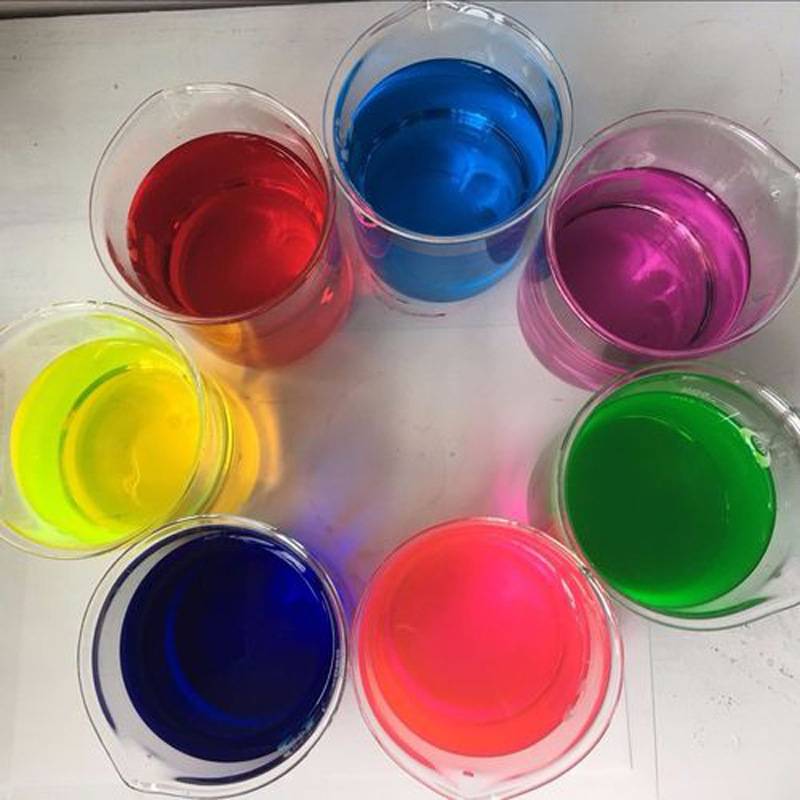
중국은 광활한 나라이며 천연색이 풍부한 많은 식물자원이 있다.이를 통해 식물유래 천연색 개발 및 활용에 필요한 풍부한 색소 소재 공급원이 된다.따라서 이러한 식물자원의 장점을 최대한 활용하여 천연색의 추출과 이용에 활용할 수 있는 특색 있는 식물자원을 더욱 발굴하고, 천연색의 수율을 높이고 생산비용을 절감하기 위한 설비 및 생산공정을 지속적으로 개선해야 한다.더욱이 일부 작물의 폐기물 및 부산물은 오렌지 껍질을 이용하여 헤스페리딘을 추출하고 수수 선체를 이용하여 수수 적색색소를 추출하는 등 천연색을 추출하는 원료로 충분히 활용될 수 있어 폐기물을 보물로 만들고 자원을 종합적으로 이용하는 친환경적이고 환경친화적인 길을 걷고 있다.
현재 합성 색소를 식물유래 천연색으로 완전히 대체하는 것은 비현실적이지만, people&의 지속적인 개선으로 천연색소를 완전히 대체할 수 있게 되었다#39;의 생활 수준과 건강에 대한 인식, 천연색에 대한 수요는 지속적으로 증가하고 있습니다.천연색 정제기술의 지속적인 성숙과 독성학적 연구의 지속적인 발전과 더불어 머지않아 식물유래 천연색이 합성색소의 많은 단점을 극복하고 식품, 제약, 화장품 산업 등에서 색소 및 첨가제로 널리 사용될 수 있을 것으로 판단된다.
참조
[1] Sava V M, Yang S A, Hong M Y 등.멜라닉 색소의 분리 및 특성 (Isolation and characterization of melanic pigments)식품과학, 1994(2):15.
[2] 저우홍샹, 트랜스.미생물로부터 천연색의 추출과 염색에의 응용 [J.사천비단, 1998(1):38-39.
[3] 후이큐샤.천연색 [J]에 대한 연구 개요.북부약국, 2011, 8(5):3.
[4] Caro Y, Anamale L, Fouillaud M 등이 있다.강력한 식품 등급 색소로 천연 히드록시 탄저퀴노이드 안료 개요 [J].Natural Products and Bioprospecting, 2012, 2 (5):174-193.
덩샹위안, 왕슈전, 리푸차오 등.천연색 (natural color)의 자원과 응용에 대한 자료입니다.China Condiments, 2006(10):51.
[6] 센칸큐, 장리롱, 유서마이 등.설탕 제품에서 착색물질 제거와 생산 과정 중의 변화.사탕수수 설탕 산업, 1981 (1):13-18.
[7] 양귀지, 손지난.미역으로부터 천연색 및 천연색소를 추출 [J. Sea Lake Salt and Chemical Industry, 2005, 34(3):30.
[8] 류신민.루비아 안료-화장품 산업에서 채굴되고 이용되기를 기다리는 고대의 안료.광시 경공업, 1995(3):789.
[9] 선 라이잉.체리적색소 [D]의 추출 및 특성.북경:중국농업대학, 2005.
[10] Zuo Y. Research and application of natural color [J.시리얼, 오일 및 식품, 2006(9):46-48.
[11] 안나마리주 D, 사르마.Phytochetnistry다 [J다]천연물, 1997, 45(4):671-674.
[12] Fang Zhongxiang, Ni Yuanying.안토시아닌의 생리적 기능에 대한 연구 진행.광저우 식품 산업 과학 기술, 2001, 17(3):60-62.
자오준쥔 (趙俊俊)의 자연색 (自然色) 연구 및 응용북방석탄의학회지, 2003, 5(3):306-307.
[14] 궁생자오.플라보노이드는 건강식품에서 큰 개발가치가 있다 [J.광저우 식품 산업 과학 기술, 2002, 18(1):63-64.
[15] 랑중민, 수오콴링, 우강경.anthraquinone food coloring의 연구 진행 (J.중국 식품 첨가물, 2006(6):76-78.
[16] 파프리카 적색의 초임계 추출과 유기용매 추출 비교.중국 조미료, 2013(4):101-103.
[17] 왕위궈, 장취안웨이, 자오영량 등이 있다.천연색의 물리화학적 성질 및 연구 진행 [J.Henan University of Technology (Natural Science Edition), 2015, 36(3):109-117.


 영어
영어 프랑스
프랑스 스페인
스페인 러시아
러시아 한국
한국 일본
일본